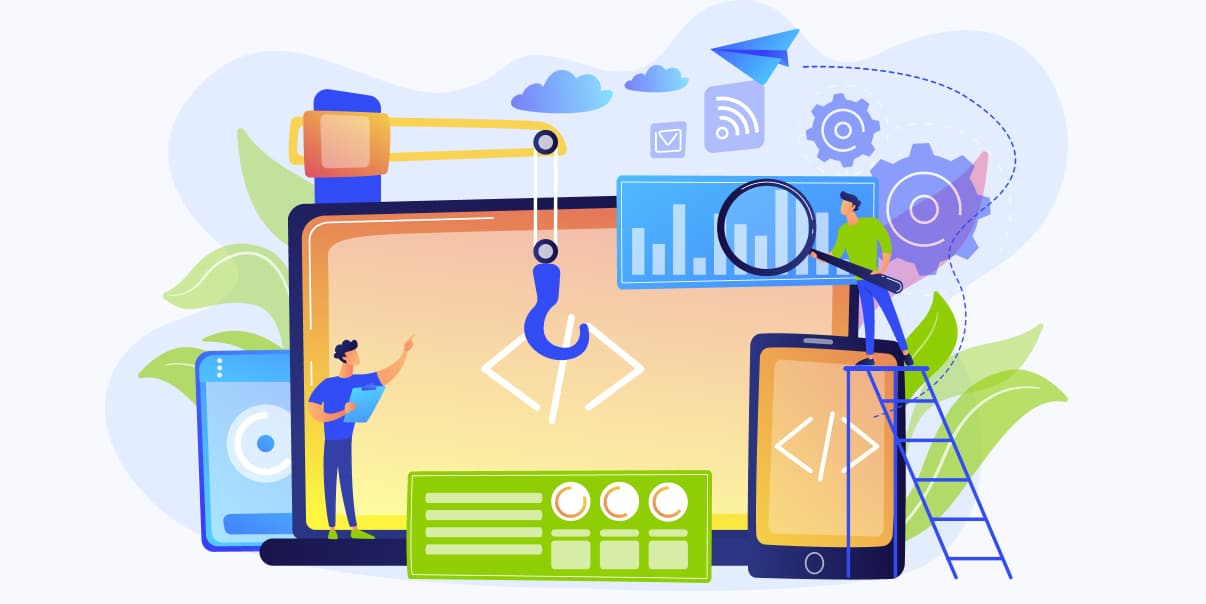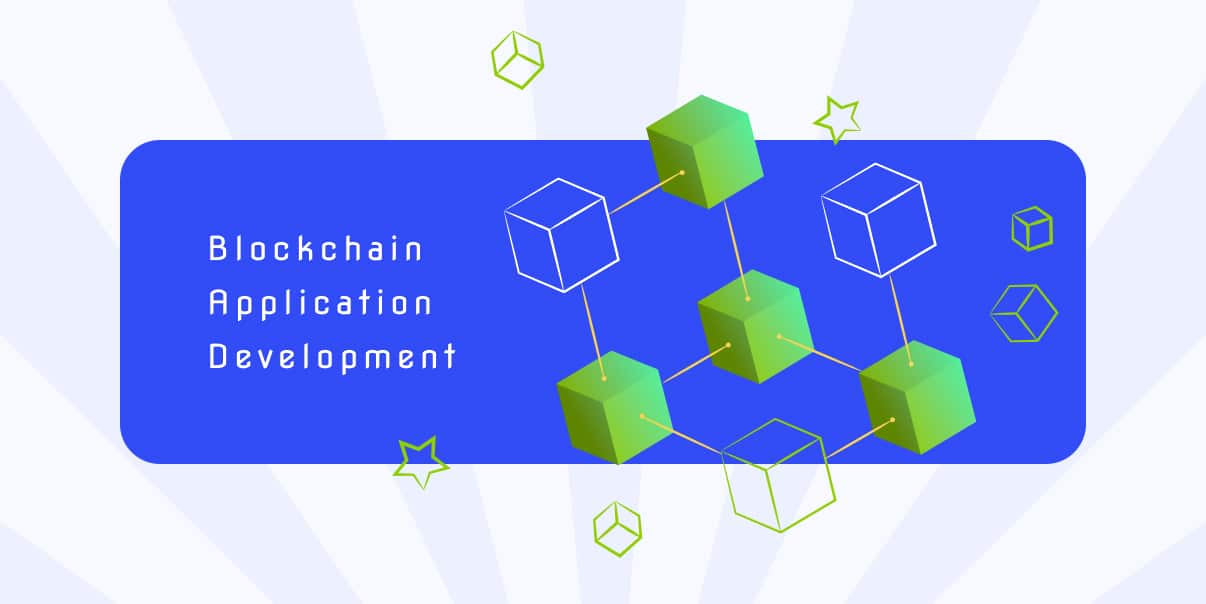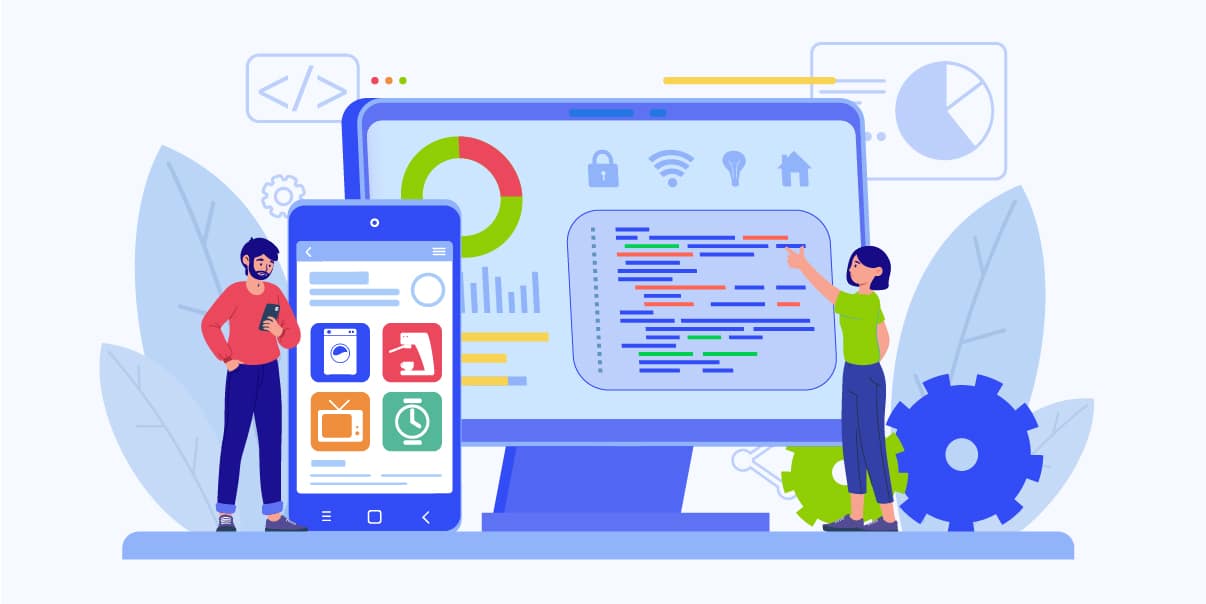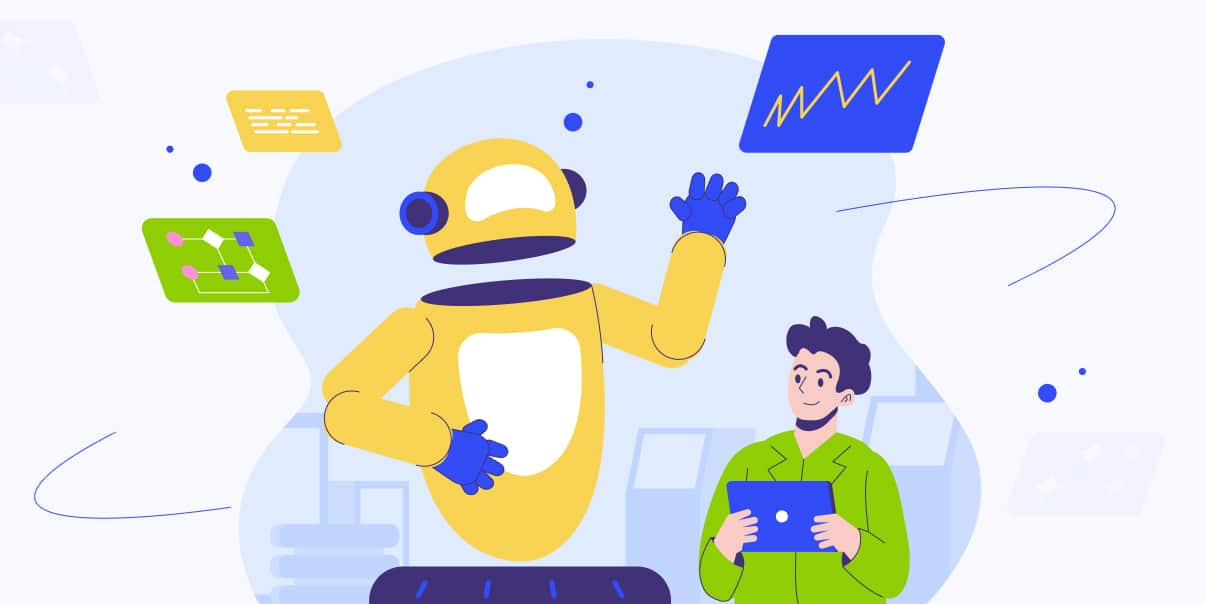Software Development Trends Watch Out For in 2023

2023 is sure to bring some significant changes in software development. Several latest trends in software development can help companies stay ahead of the curve.
Software development is an essential part of how we use technology today. It is when experts create software programs that help make computers and other devices work better.
Keeping up with the newest software development trends helps you stay ahead of your competitors and understand how it works. Knowing what software trends you should use and how they might affect you is vital. So, read on to learn more about this year’s top software development trends.
The Software Development Industry in 2023
The software development industry is rapidly growing and changing. It focuses on creating software apps for smartphones, computers, and other digital devices. Thus, it improves their functionality and user experience.
Some trends allow software developers to create more complex and valuable programs. Thus, here are the things you need to know about this industry:
Current State of the Industry
The software development industry is crucial in today’s world. From smartphones to computers, the software is what makes them work. Many people work in the industry, including programmers and developers. Developers use a wide range of tools and frameworks to create software for various purposes, from simple to complex.
The industry constantly changes with new technologies and trends emerging. Some of the latest trends in software development include machine learning and cloud computing. These trends are changing how the software works, and businesses and individuals use it.
Overall, the industry is dynamic and exciting. It has a bright future, and software developers will be in high demand. And it will continue to play an integral role in shaping the future of technology.
Predictions For the Future
Many exciting predictions exist for the software industry. It will continue to evolve through the years. More than the current trends, many emerging ones will appear. Developers will create software with advanced capabilities, like autonomous driving and e-commerce experiences.
Key Drivers of Growth
The key drivers of growth in the software industry are the factors that help it grow and evolve. Here are some of them:
Demand for new technologies
As new technologies continue to emerge, there is a growing demand for developers. They create innovative systems and apps using these technologies.
Digital transformation
Many businesses undergo digital transformation, moving their operations and services online. And this creates a need for developers who can create and maintain digital platforms and apps.
Remote work
The COVID-19 pandemic has played a vital role in accelerating the trend toward remote work. Companies are now looking for software developers who can work from anywhere worldwide.
Creativity
Developing software requires creativity and the ability to think outside the box. It means software developers must develop creative solutions for complex software problems.
Innovation
Developers are constantly innovating to create better software programs and apps. It helps businesses stay competitive in an ever-evolving software industry.
These key growth drivers help shape the software industry’s future. Also, these create new development opportunities and possibilities.
Emerging Markets
The software development industry is expanding in emerging markets. Hence, it offers significant potential for new ideas and innovation. Some of the emerging markets for 2023 are:
1. Latin America
This region has a booming tech industry and a large pool of skilled software developers.
2. Africa
Many countries here invest in technology and build tech hubs to attract talent and investment.
3. Southeast Asia
This region has a large and rapidly growing tech industry. Vietnam, Indonesia, and the Philippines are seeing significant growth in software programming.
4. Eastern Europe
Poland, Romania, and Ukraine have many highly skilled developers. Eastern Europe is becoming a popular destination for outsourcing software services.
In these emerging markets, there is a growing demand for software developers. As these markets grow, they will become increasingly vital players in the global software industry.
The software development world is fast-paced and exciting, with room for growth and innovation. As technology advances, expect to see even more innovative software.
The Latest Software Development Trends
Utilizing the latest trends in software development is essential. Here are some crucial trends to watch out for in 2023:
Artificial Intelligence (AI) and Machine Learning (ML)
AI and ML are software development trends that automate specific functions. AI enables computers or machines to perform tasks that typically require human intelligence. It includes understanding language, recognizing images, and making data-based decisions. Meanwhile, ML lets computers learn and improve independently without being explicitly programmed. You can use these technologies in software apps, like web search engines and facial recognition software.
AI and ML are changing the world of the software industry by making it easier and faster to create new apps. Developers can use AI to test their programs and find bugs, saving time and effort. On the other hand, ML helps developers predict what users might want in a program based on their previous behavior and data.
Examples:
- Voice assistants like Siri or Alexa
- Chatbots
- Image recognition software
- Natural language processing (NLP)
- Predictive analytics software
- Personalized recommendations on websites like Amazon or Netflix
Low-Code and No-Code Development
Low-code and no-code development are software development tools that need little to no complex coding. With low-code development, you still need to write some code, but the tools make it easier and faster to build programs. Meanwhile, no-code development eliminates the need to write any code at all. You can use visual interfaces and drag-and-drop tools to create apps.
Low-code and no-code make software development more accessible to those who do not have a lot of coding experience. More people can create apps without hiring a software developer or learning coding languages. Also, it makes the process faster since it takes less time to build programs using these tools.
Examples:
- Wix
- Appian
- Zoho Creator
- OutSystems
- Mendix
- Bubble
Cloud Computing
Cloud computing is storing and accessing data and programs over the Internet. It allows you to access information anytime, anywhere, without storing it on your device. Companies use cloud computing for storage, hosting services, and software development platforms.
More businesses are utilizing cloud services because of their many advantages. It reduces costs and effort since everyone can access resources from anywhere in the world. Also, it lets developers create more complex programs and collaborate with remote teams.
Examples:
- Microsoft Azure
- Amazon Web Services (AWS)
- Google Cloud Platform
- IBM Cloud
- Software-as-a-Service (SaaS)
- Platform-as-a-Service (PaaS)
DevOps
DevOps is the combination of development and operations. It is a methodology for quickly delivering software products to market. In DevOps, teams work faster using automation tools to manage processes efficiently. DevOps also enables the faster development of progressive web apps without compromising quality.
Moreover, DevOps lets companies integrate code into their systems more frequently and safely. Also, it reduces the time spent on troubleshooting and debugging since you can detect errors early in the development process. Through DevOps, businesses can deliver products to customers more quickly. And they can respond to changes in the market more effectively.
Examples:
- GitHub
- Jenkins
- Ansible
- Chef
- Kubernetes
- Continuous Integration and Continuous Delivery (CI/CD)
- Infrastructure as Code (IaC)
Cybersecurity
Cybersecurity protects computers, networks, and other devices from attacks or unauthorized access. Developers must incorporate security measures into their systems to prevent cyber threats.
Every business should invest in cybersecurity to combat the growing number of cyber attacks today. Companies can use encryption, firewalls, and two-factor authentication to secure data. Also, they need to consider using artificial intelligence for threat detection and prevention.
Examples:
- Identity and Access Management (IAM)
- Antivirus/Anti-Malware Software
- Password Managers
- Bug Bounties
- Penetration Testing
Top Trends in the Software Development Process
Staying up-to-date with the latest software development technology is crucial. It helps you create more efficient and successful programs.
Agile Software Development
Agile development emphasizes collaboration and flexibility. It allows developers to deliver high-quality products using an iterative process quickly. Instead of creating all the software simultaneously, the team focuses on creating a small part during each sprint. It makes it easier to change and improve along the way.
Agile makes the development process faster and more flexible. It helps teams collaborate better and use their resources more efficiently. Also, software teams can start working immediately and adjust as they go.
Examples:
- Scrum
- Kanban
- Extreme Programming (XP)
- Feature-Driven Development (FDD)
- Test Driven Development (TDD)
Continuous Integration and Continuous Deployment (CI/CD)
CI/CD streamlines the process and improves product quality. When a software development team makes changes to the code, those are automatically tested and integrated with the rest of the code. Then, the updated software is automatically deployed to users without any delay.
In CI/CD, teams continuously integrate their code into a shared repository for testing. Once the tests pass, the team deploys the code into production. Automation is at the heart of the CI/CD process, making it easier for teams to deliver products quickly.
CI/CD makes the development process more efficient and faster. There is no need to wait long to see changes and updates since users can get the updates immediately. Also, it helps teams release updates more frequently. It ensures all product parts are working well before they reach customers. Also, automation reduces errors while speeding up the process.
Examples:
- GitLab CI/CD
- Jenkins
- TeamCity
- CircleCI
- Microservices
Test-Driven Development (TDD)
TDD focuses on testing first before writing any code. Developers write tests for the program and check them for errors. Then, they write code to pass those tests and ensure it works correctly. This approach helps catch errors and bugs before they become more significant problems. Also, it makes sure the code works as expected.
With TDD, developers can create high-quality software faster and more reliable programs. Tests help find bugs early, reducing time spent on troubleshooting and debugging. TDD makes it easier to maintain the code since you can quickly detect changes that break the program. As a result, TDD can improve customer satisfaction and enable more efficient creation of complex software.
Examples:
- JUnit
- TestNG
- RSpec
- NUnit
The Future of Software Development
As software development advances, expect more trends in the software industry. The software development process is becoming more efficient and automated with advanced tools. The software industry will continue finding new ways to make the process easier.
Predictions for the Future of Software Development
In the future, software development teams will focus on automation. Automation helps you build software faster and more reliably. Developing software will be more accessible to non-programmers.
Moreover, companies will find new ways of using data for software development. They will gather, analyze, and use data to create software. It helps them better understand customer needs and design software that meets them. Also, development teams will collaborate more with remote teams in different parts of the world.
Emerging Technologies and Their Impact on Software Development
Emerging software development technologies are revolutionizing software development. Developers can use tools to create software with minimal effort or without coding knowledge. So, here are a few of the emerging technologies:
Blockchain technology is a transparent and secure way to store data. It lets developers build software that does not require third-party trust. Also, it creates software in the banking, finance, and healthcare industries. You can use blockchain technology to securely store data, manage contracts, and track digital assets.
IoT is an interconnected network of devices and software apps. It can remotely control physical objects like lights, cars, and home appliances. Additionally, it offers data collection capabilities that developers can use in various products. IoT helps teams create innovative products by collecting data from multiple devices.
- Augmented Reality (AR)
AR is a technology that covers virtual objects and information in real-world environments. Developers can use AR to make software products more interactive and engaging. They can create software with AR features such as 3D models, navigation, and augmented reality games.
With these emerging software development trends, businesses can create software more effectively. It helps them stay ahead of the competition and meet customer needs.
The Challenges Facing the Software Development Industry
The industry has many challenges to overcome. Developing software is an intricate and complex process. Here are some of the significant challenges in the software industry:
1. Keeping up with the pace of change
Technology is evolving rapidly. And developers need to constantly learn new skills and keep pace with the latest trends to stay relevant and create the best software.
2. Ensuring software security
Cybersecurity threats are now becoming more prevalent and sophisticated. Software developers need to ensure they create secure apps. They must also update their programs regularly with the latest security patches.
3. Creating accessible software
Software products must be accessible to everyone, including people with disabilities. So, developers must ensure that all can use their software, regardless of their abilities.
4. Meeting user expectations
The software industry has become more prevalent and competitive. And users expect more features, better performance, and faster updates. Thus, developers need to make sure they meet user expectations.
5. Developing sustainable software
Awareness about the impact of technology on the environment is growing. And developers need to find ways to create environmentally sustainable software. They must consider the environmental impact of their products and find green solutions.
6. Balancing quality, speed, and sustainability
Meeting user demands high-quality software while considering environmental product impact is challenging. Developers must find ways to create sustainable software that meets users’ expectations.
7. Saving costs
It can be expensive to develop software since it requires investments in programming languages and tools. Companies need to spend a lot on standards, licenses, and implementation. Also, they need to pay for cloud infrastructure and data storage services. That is why saving money is another challenge in this industry.
8. Maintaining quality
Creating quality software is tricky as it needs designing and programming languages expertise. Also, teams need to test the code thoroughly before releasing it. Any bugs or errors can cause customer problems, so developers must ensure their products work correctly.
Opportunities for Growth in the Industry
This industry is expanding and offers many growth opportunities. With the latest tools and technologies, businesses can create faster and better software. Here are some of the best growth opportunities in this industry:
Adapting to the latest technologies
Developing fast-paced software and staying up-to-date with the latest trends is essential. Companies should invest in learning technology regularly to stay ahead of the competition.
Leveraging cloud technology for software development
Cloud services help businesses save time and money with improved collaboration capabilities. Companies can use cloud platforms to create, store, and share data quickly.
Automating processes
Automation helps developers complete tasks more efficiently with minimal effort. It saves time on debugging and makes it easier to add features. Moreover, automation tools are becoming more intelligent and available to non-programmers. Thus, this is an opportunity for businesses to expand their capabilities in developing software.
Improving customer experience
Software products should deliver great customer experiences for users to keep them returning. So, developers must understand their target audience and create products that meet their needs.
Enhancing cybersecurity
Cybersecurity is critical for businesses these days. And developers must ensure they use the latest security tools and processes. Hence, companies should invest in data protection, authentication measures, and firewalls.
Embracing cross-platform development for broader reach
Cross-platform development is gaining popularity as it helps create apps on multiple platforms. Companies can develop iOS and Android apps with cross-platform tools like React Native and Flutter. It helps them save time while increasing their reach.
Creating more personalized software
Artificial intelligence and machine learning revolutionize the way businesses develop software. They can use these to create more innovative products that offer more customization for customers.
The software industry is full of opportunities for growth and innovation. Developers can create software that meets users’ needs by staying current with the newest trends. They can also help solve complex problems.
Conclusion
Software development has grown into an essential part of people’s lives. With the many custom software development trends, businesses can create software more efficiently. Automation, cloud computing, and AI are helping teams improve their process and make better products. Also, developers must continuously learn new technologies to stay ahead of the competition. With these trends, you can create software that meets user needs and solve complex problems.
Software development is more than just coding. It requires a combination of skills and knowledge to create software that works reliably. With the ever-evolving trends, software teams must continuously learn new things. This way, they stay up-to-date with the latest breakthroughs. Thus, development trends help you create products that constantly meet user expectations.
We’re BIT Studios!
At BIT Studios we specialize in designing, building, shipping, and scaling beautiful, usable products with blazing-fast efficiency



